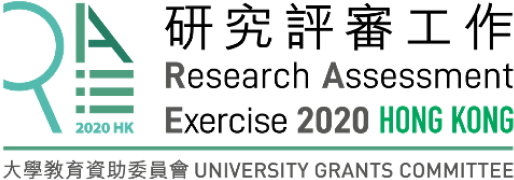Research categories:
?Clinical Medicine
Public, Environmental & Occupational Health (5)
Medicine, General & Internal (1)
Pediatrics (1)
Psychiatry/Psychology
Psychology, Developmental (1)
Social Sciences, General
Substance Abuse (1)
Education & Educational Research (1)
Impact locations:
?Asia
Hong Kong, China (5), China (Mainland China) (2), Vietnam (1), Philippines (1), Malaysia (1), Brunei (1), Cambodia (1), South Korea (1), Mongolia (1)
Oceania
Australia (1), Vanuatu (1), Fiji (1), Tonga (1), Samoa (1)
Case Study
Reducing smoking prevalence in Hong Kong and beyond: Transforming smoking cessation services and tobacco control policy
1. Summary of the impact
Researchers from University of Hong Kong (HKU) have transformed smoking cessation services and tobacco control policies. Our smoking intervention models have been widely adopted by smoking cessation providers in Hong Kong and informed development of smoking cessation services in the WHO West Pacific Region. Our research has provided key evidence for the Hong Kong government to extend smoke-free areas, raise tobacco tax, strengthen pictorial warnings, and ban new tobacco products. Our work has directly contributed to the reductions in smoking prevalence from 14.4% and 9.6% in 2003 to 10.0% and 2.5% in 2017 in Hong Kong adults and adolescents, respectively.
2. Underpinning research
Key HKU School of Nursing researchers:
Professor Tai-hing Lam (Chair Professor, 2000-date)
Professor Sophia SC Chan (Professor, 2006-date)
Dr Daniel SY Ho (Associate Professor, 2012-date)
Dr William HC Li (Associate Professor, 2015-date)
Dr Man-ping Wang (Associate Professor, 2019-date)
Dr Derek YT Cheung (Assistant Professor, 2019-date)
Since 2000, we have published 276 papers and received 82 grants (USD 8.9 million) related to research on the burden of tobacco use, smoking cessation, harms of second-hand smoke exposure, prevention and treatment of youth smoking, use of emerging tobacco products (e-cigarettes and heated tobacco) and tobacco control policy. Our population-based, epidemiological studies on smoking and second-hand smoke exposure showed an urgent need to deliver effective smoking cessation at the population level to reduce health burden (3.1).
We developed various novel smoking intervention models in 18 large-scale randomised controlled trials since 2009 (Grants 3-6). We have first developed and showed the effectiveness of brief smoking cessation advice (AWARD model) in community smokers (3.2) and further improved the model’s effect by combining nicotine replacement therapy sampling in patients and community smokers. To extend evidence-based smoking cessation treatment to unmotivated or hard-to-reach smokers, which constituted the bulk of local smokers in Hong Kong, we developed a proactive intervention model wherein smokers were actively recruited and referred to smoking cessation services with beneficial effects confirmed by trials (3.3). By leveraging recent advances in information and communication technology, we also provided the world’s first robust evidence on the utility of chat-based support via mobile instant messaging apps for smoking cessation. Our first evaluation of a smoking cessation service in Asia (3.4) has laid the groundwork for the development of our Youth Quitline (3.5) and Women Quitline (Grant 2), smoking cessation clinics in Hong Kong and in Beijing and Guangzhou since 2006 with proven effectiveness. Our continuous work on harms of second-hand smoke exposure in children has informed the design of effective cessation interventions for smoking parents in trials.
Our large territory-wide smoking related policy surveys (Grant 7) from 2013 onward among 15,223 respondents and school-based smoking survey (Grant 8) from 2003 onward among 375,297 students from 1,175 schools have provided key evidence on tobacco industry denormalisation, negligible effects of taxation on smuggling, adverse effects of e-cigarette use on respiratory symptoms in adolescents, null and probable adverse effects of e-cigarettes on quitting in youth smokers and adult smokers, public support on e-cigarette regulation and plain packaging and tobacco endgame (3.6).
3. References to the research
3.1 Lam TH, Ho SY, Hedley AJ, Mak KH, Peto R. Mortality and smoking in Hong Kong: case-control study of all adult deaths in 1998. British Medical Journal. 2001; 323(7309): 361. DOI: 10.1136/bmj.323.7309.361
3.2 Chan SSC, Wong DCN, Cheung YTD, Leung DYP, Lau L, Lai V, Lam TH. A block randomized controlled trial of a brief smoking cessation counselling and advice through short message service on participants who joined the Quit to Win Contest in Hong Kong. Health Education Research. 2015; 30(4):609-21. DOI: 10.1093/her/cyv023
3.3 Wang MP, Suen YN, Li WHC, Lam COB, Wu SYD, Kwong ACS, Lai VW, Chan SSC, Lam TH. Intervention with brief cessation advice plus active referral for proactively recruited community smokers: a pragmatic cluster randomized clinical trial. JAMA Internal Medicine. 2017; 177(12): 1790-7. DOI: 10.1001/jamainternmed.2017.5793
3.4 Abdullah ASM, Hedley AJ, Chan SSC, Ho WWN, Lam TH. Establishment and evaluation of a smoking cessation clinic in Hong Kong: a model for the future service provider. Journal of Public Health. 2004; 26(3) 239-44. DOI: 10.1093/pubmed/fdh147
3.5 Li WHC, Chan SSC, Wang MP, Ho KY, Cheung YTY, Chan VWF, Lam TH. An evaluation of the Youth Quitline Service Young Hong Kong Smokers. Journal of Adolescent Health. 2017; 60(5): 584-91. DOI: 10.1016/j.jadohealth.2016.11.022
3.6 Wang MP, Wang X, Lam TH, Viswanath K, Chan SSC. The tobacco endgame in Hong Kong: public support for a total ban on tobacco sales. Tobacco Control. 2015; 24(2):162-7. DOI: 10.1136/tobaccocontrol-2013-051092
Key grants (some grants have more than 1 principle investigator in different phases)
Grant 1. Ho DSY, et al. A study for informing and evaluating tobacco control policies in Hong Kong Health and Medical Research Fund, Food and Health Bureau, Hong Kong Special Administrative Region (HKSAR). (1/2019-12/2021) HK$9,000,000
Grant 2. Li WCH, et al. Youth smoking Quitline. Tobacco Control Office, Department of Health, HKSAR (1/2013-/12/2018) HK$4,290,000
Grant 3. Wang MP, et al. Combined brief smoking cessation intervention trials. Health Medical Research Fund, Health Medical Research Fund Fellowship, General Research Fund, Hong Kong Council on Smoking and Health (3/2015-12/2020) HK$6,152,117
Grant 4. Cheung DYT, et al. NRT sampling trial and WhatsApp support group trials. Health Care and Promotion Scheme, Health and Medical Research Fund, Food and Health Bureau, HKSAR. (7/2018–6/2020) HK$2,167,620
Grant 5. Lam TH, et al. Smoking Cessation Evaluation and Training Project. Tobacco Control Office, Department of Health, HKSAR (7/2014-11/2017) HK$5,700,000
Grant 6. Chan SS, et al. Randomised controlled trials in patients with cardiac, cancer, diabetes or erectile dysfunction, Health Medical Research Fund & General Research Fund (1/2001-12/2012) HK$3,908,854
Grant 7. Wang MP, et al. Tobacco Control Policy-related surveys. Hong Kong Council on Smoking and Health (3/2016-6/2018) HK$988,000
Grant 8. Ho SY, et al. School-based smoking survey. Food and Health Bureau, HKSAR (9/2003-9/2017) HK$4,801,225
4. Details of the impact
Impact on health
Our smoking cessation interventions have helped 2,284 smokers (430 community smokers, 133 Youth Quitline smokers, 21 Women Quitline smokers, 261 workplace smokers and 1,439 patients) quit at 6 months in Hong Kong since October 2013 (http://sctc.nursing.hku.hk). This saves 1,142 lives according to the WHO’s statement that “1 of 2 smokers will be killed by smoking”.
Impact on smoking cessation service and cessation promotion campaign
Our research on smoking cessation have influenced government-funded providers of Hong Kong smoking cessation services. Since October 2013, we have trained 746 people (242 nurses, 444 adolescents, 60 NGO workers) to deliver smoking cessation interventions and 248 youth peer counsellors for HKU Quitline counselling (3.5). Our innovative intervention models (3.2–3.4) have been adopted by the Hong Kong Council on Smoking and Health and delivered to 7,756 smokers in its community-based smoke-free campaigns “Quit-to-Win” since October 2013 [A]; TWGHs Integrated Smoking Cessation Centres (a main cessation provider treating >2000 local smokers annually) [B]; and Lok Sin Ton Benevolence Kowloon, a NGO which serves >600 smokers in the workplace annually [C]. Our HKU Youth Quitline, which counselled ~400 adolescent smokers annually, is among the 4 smoking cessation services incorporated into the Department of Health Quitline [D].
Based on our research on smoking cessation services (e.g., 3.4-3.5), we have developed and validated the world’s first smoking cessation service evaluation tool (https://mrct.sph.hku.hk/), which has been tested by 27 smoking cessation clinics and hospitals in Hong Kong, Mainland China and member states of the WHO Western Pacific region under the WHO Fellowship Programme on Tobacco Control [E].
Impact on tobacco control policy and de-normalisation of smoking
Our research has led to implementation of tobacco control policies by the HKSAR government. The findings from our School-based surveys [Grant 8] on increased tobacco tax and reduced youth smoking were among the leading justifications for the Government to increase tobacco tax by 11.7% in 2014 [F]. In 2017, our policy survey [Grant 7] provided evidence of strong public support for the government to extend the covering area of pictorial heath warning on cigarette packs from 50% to 85% [G].
Our research findings on adverse effects of e-cigarettes; growing use of e-cigarettes in primary students (Grant 8) and heated tobacco products in adults (Grant 7); and null association of e-cigarette use with quitting in adults and youths (Grants 2-3) had been publicised in numerous promotional events in educational and community institutions and via media to urge public support for the tobacco ban of emerging tobacco products. These findings helped us to secure >30,000 signatures and 60 petition letters sent to the Chief Executive of Hong Kong, who subsequently proposed a total ban of new tobacco products in the 2018’s Policy Address (https://www.policyaddress.gov.hk/2018/eng/policy_ch06.html point #182). Our research findings of e-cigarettes use in students were used as one of the main justifications in the Government’s proposal [H].
The daily smoking prevalence in the aged-15-and-above in Hong Kong has reduced from 14.4% in 2003 to 10.7% in 2013 and 10.0% in 2017. The prevalence of adolescent smoking also reduced from 9.6% in 2003, to 3.0% in 2013 and 2.5% in 2017 (Census and Statistics Department, HKSAR Government, Thematic Household Survey 2003-2018, and Grant 8). The public health impact is also evident by the reducing incidence of smoking-related diseases. For instance, the age-standardised incidence rate of lung cancer per 100,000 persons reduced from 43.8 in 2003 to 37.1 in 2013 and 36.5 in 2016 (Hospital Authority, HKSAR Government, Hong Kong Cancer Registry).
Impact on international agency and tobacco control development
We have been providing insights in the WHO Fellowship smoking cessation training programmes organised by Department of Health annually since October 2013 wherein 134 middle-managers in governments and NGOs from 17 countries in the Western Pacific Region (Brunei, Cambodia, China, Cook Islands, Fiji, Kiribati, Laos, Malaysia, Mongolia, Republic of Palau, Samoa, South Korea, The Philippines, Tokelau, Tonga, Vanuatu and Vietnam) attended and exchanged smoking situations and plans on tobacco control strategies at their countries [D].
Our work has also been passed onto other countries. Our pioneering research on WhatsApp-based relapse prevention intervention for recent quitters has been included by the Australia’s Cancer Council Victoria in their national tobacco control resource since 2016 [I]. Our discovery of a link between e-cigarette use and adverse respiratory health in adolescents (Grant 8) has been referenced by the US National Academics of Sciences, Engineering and Medicine in its consensus study report on e-cigarettes [J] (which was also included in the HKSAR Government’s proposal to ban e-cigarette in February 2019 [H]).
5. Sources to corroborate the impact
[A] Hong Kong Council of Smoking and Health. “Quit to Win” Smoke-free Community Campaign.
[C] The Lok Sin Tong Benevolent Society, Kowloon. (September 2019) “Smoking Cessation Programme in workplace” research result announcement.
[D] Tobacco and Alcohol Control Office, Department of Health, HKSAR. Quitting Smoking.
[E] World Health Organization Collaborating Centre for Smoking Cessation and Treatment of Tobacco Dependence. Fellowship Programme on Tobacco Control 2013 to 2018.
[F] Legislative Council, HKSAR. (2014). Dutiable Commodities (Amendment) Bill 2014. Page 2, points 4 and 6.
[G] Legislative Council, HKSAR. (2017). Proposal to Amend Health Warnings on Tobacco Product Packets and Retail Containers, Legislative Council Panel on Health Services. Page 5, point 14, reference no. 2.
[H] Legislative Council, HKSAR. (2019). Smoking (Public Health) (Amendment) Bill 2019. Point 5, 6 & 13.
[I] Greenhalgh, EM., Stillman, S., & Ford, C. (2016) 7.14 Cessation assistance: Telephone- and Internet-based interventions. In Scollo, MM and Winstanley, MH [editors]. Tobacco in Australia: Facts and issues. Melbourne: Cancer Council Victoria; 2016.
[J] US National Academics of Sciences, Engineering and Medicine. (2018). Public Health Consequence of E-Cigarettes. (P. 438, 441) Washington DC: The National Academies Press.

